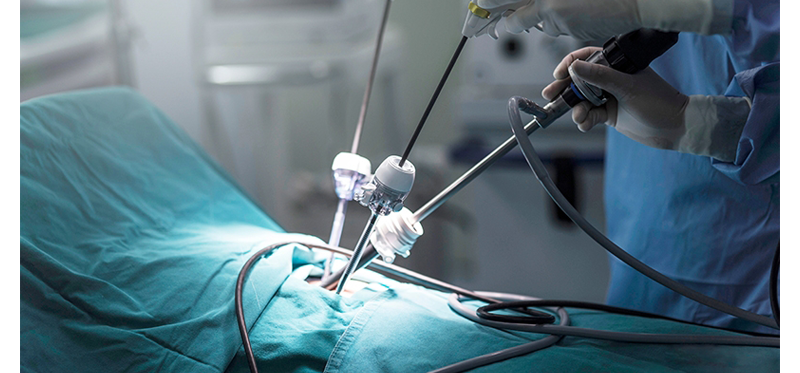LAPAROSCOPY

What is Laparoscopy?
Laparoscopy is a surgical procedure that involves insertion of a narrow telescope-like instrument through a small incision in the belly button. This allows visualization of the abdominal and pelvic organs including the area of the uterus, fallopian tubes and ovaries.
Why is Laparoscopy done for evaluation of Infertility?
This procedure allows us to determine whether there are any defects such as scar tissues, endometriosis, fibroid tumors and other abnormalities of the uterus, fallopian tubes and ovaries.
In case any defects are found during the laparoscopic procedure, then they can sometimes be corrected with operative laparoscopy which involves placing instruments through ports in the scope and through additional, narrow (5 mm) ports which are usually inserted at the top of the pubic hair line in the lower abdomen.
However sometimes due to individual patient history (For example: Prolonged marital life, Advanced maternal age ) this test may be suggested by doctors to avoid wastage of time in case of advanced age.
Benefits of performing Diagnostic Laparoscopy
Some causes of infertility, like endometriosis, can only be diagnosed through laparoscopy. Laparoscopy allows your doctor to not only see what’s inside your abdomen, but also gives an opportunity to treat some causes of infertility, allowing you a better chance at getting pregnant either naturally or with fertility treatments.
How is Laparoscopy done?
Laparoscopy is performed in a hospital, under general anesthesia. Your doctor will give you instructions on how to prepare for surgery beforehand. You will be told not to eat or drink for 8 or more hours before your scheduled surgery, and you may be instructed to take antibiotics.
You’ll receive an IV, through which fluids and medication to help you relax will be delivered. The anesthesiologist will place a mask over your face, and after breathing a sweet smelling gas for a few minutes, you’ll fall asleep.
Once the anesthesia has taken effect, the doctor will make a small cut around your belly button. Through this cut, a needle will be used to fill your abdomen with carbon dioxide gas. This provides room for your doctor to see the organs and move the surgical instruments. Once your abdomen is filled with gas, the surgeon will then place the laparoscope through the cut to look around at your pelvic organs.
Sometimes two or three more small cuts are made, so that other thin surgical instruments can be used to make repairs or move the organs around for a better view.
Complications and Risks
Complications include the possibility of damage to other structures in the pelvis such as the bladder, ureter, bowel and blood vessels. Unexpected open surgery (larger incision) is always a possibility, but is very rare. Some common complications include bladder infection after surgery, skin irritation around the incision.
Any surgery can have an anesthesia-related complication or be associated with post-operative infection, such as a skin infection at the incision site.
Fortunately, all of these complications are very unusual when laparoscopy is expertly performed on healthy women.
Evaluation of Result
| NORMAL: | The outside of the uterus, tubes, ovaries and relationship between tubes and ovaries looks normal |
|---|---|
The fimbrial ends of the tubes appear normal | |
When dye is pushed through the cervix, it comes out of the fimbrial end indicating that the tubes are patent | |
| ABNORMAL: | The size or shape of the outside of the uterus does not look normal. |
Presence of Scar tissue outside the uterus. | |
The tube is blocked | |
Adhesions around the tube or ovary distorting tubo-ovarian relationship |
